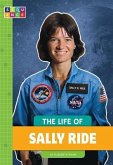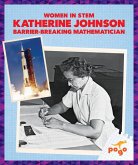When the very first men landed on the moon on July 20, 1969, more than half a billion people around the world were watching. They were amazed at what they were seeing on their television sets. The journey to the moon had taken years of skill, wisdom, and effort. It had also taken a huge team of more than 400,000 people--including a young woman named Margaret Hamilton. Margaret loved numbers from the time she was a child. As an adult, she was fascinated by creating computer software, long before the rest of the world had ever heard of it. After graduating from college in Indiana, Hamilton moved to Massachusetts. One day she heard that NASA (the National Aeronautics and Space Association) was looking for computer coders. They wanted to put men on the moon within a few years. Margaret was thrilled to get the chance to work on something this monumental. At that time, space flight was still an idea that was mostly found in science fiction books and movies. At first, NASA primarily gave Margaret the jobs that others did not want. She spent countless hours handwriting notes and computing formulas with paper and pencil. By the time the Apollo missions were heading for the moon, Margaret was a constant member on the team--and the only woman. When Apollo 11 was only minutes from making its world famous moon landing in 1969, it was Margaret who was behind the fact that it happened correctly. A last minute malfunction almost ended the mission. However, her software program came to the rescue. The Apollo's lunar module gently sat down on the moon surface. For many years, Margaret helped NASA achieve its main goals. Her talent for numbers and for creating software played a very important role in making space travel a reality. Even after she left NASA, Margaret kept producing software. She developed a universal computer language that made online communication faster and easier.








